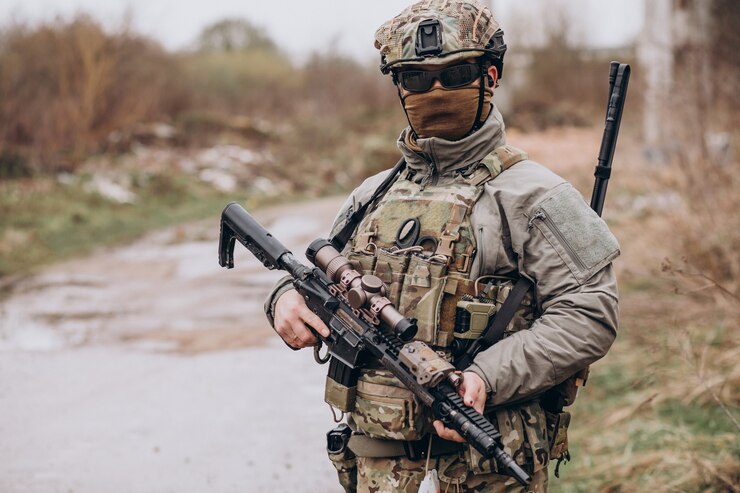Shooting, often perceived as a simple act of aiming and firing a gun, encompasses a rich history, diverse disciplines, and a profound sense of skill and precision. From its ancient origins to modern-day competitions, shooting has evolved into a respected sport worldwide, attracting enthusiasts of all ages. Let’s delve into the multifaceted realm of shooting sports, exploring its history, disciplines, safety measures, benefits, and future prospects.
History of Shooting Sports
Early Origins
Shooting as a practice dates back to ancient civilizations where it served both as a means of survival and a method of warfare. Early hunters relied on primitive weapons like bows and arrows, gradually transitioning to more advanced tools such as spears and firearms.
Evolution of Modern Shooting
The development of firearms revolutionized the practice of shooting, paving the way for organized competitions and recreational pursuits. Over the centuries, advancements in technology and techniques have refined shooting into the diverse array of sports we know today.
Types of Shooting Sports
Shooting sports encompass a wide range of disciplines, each requiring specific skills and equipment. Some of the most popular categories include rifle shooting, pistol shooting, and shotgun shooting.
Rifle Shooting
Rifle shooting involves precision marksmanship with a long-barreled firearm, typically at stationary targets placed at varying distances. Disciplines like precision rifle and small-bore rifle require shooters to exhibit exceptional focus and control.
Pistol Shooting
Pistol shooting emphasizes accuracy and speed, with competitors using handheld firearms to engage targets at close range. Events such as bullseye shooting and practical shooting demand quick reflexes and impeccable technique.
Shotgun Shooting
Shotgun shooting involves hitting moving targets, simulating hunting scenarios or clay pigeon sports. Skeet, trap, and sporting clays are popular shotgun disciplines that challenge shooters’ agility and coordination.
Importance of Safety in Shooting
Safety is paramount in shooting sports, given the inherent risks associated with firearms. Strict adherence to safety measures, along with comprehensive training and education, ensures the well-being of participants and bystanders.
Safety Measures
Proper handling and storage of firearms, use of protective gear, and adherence to range rules are fundamental safety practices in shooting. Regular maintenance and inspection of equipment also contribute to accident prevention.
Training and Education
Effective training programs and educational initiatives play a crucial role in promoting safe shooting practices. Beginners should seek guidance from certified instructors and participate in firearm safety courses to acquire essential skills and knowledge.
Benefits of Participating in Shooting Sports
Beyond the thrill of competition, shooting sports offer numerous physical, mental, and social benefits to participants.
Physical Benefits
Shooting requires steady hands, keen eyesight, and precise motor skills, leading to improved coordination and dexterity. Regular practice also enhances muscle strength and endurance.
Mental Benefits
The focus and concentration required in shooting promote mental acuity and cognitive function. Moreover, the discipline instills qualities such as patience, discipline, and resilience, which are invaluable in everyday life.
Social Benefits
Shooting fosters camaraderie and teamwork among enthusiasts, providing opportunities for social interaction and networking. Club events, competitions, and training sessions create a supportive community where individuals share knowledge and experiences.
Famous Shooting Competitions and Events
Shooting has earned a place on the global stage through prestigious competitions and events, showcasing the talent and dedication of athletes worldwide.
Olympic Games
The Olympic shooting events attract elite marksmen from around the world, competing in disciplines like rifle, pistol, and shotgun shooting. Athletes vie for gold medals while representing their countries on the grandest sporting platform.
World Championships
International shooting federations organize world championships where top competitors converge to test their skills and vie for championship titles. These events feature a diverse range of disciplines and draw significant attention from the shooting community.
Getting Started in Shooting
Embarking on a journey into the world of shooting requires proper equipment, training, and guidance.
Equipment Needed
Beginners should invest in quality firearms, ammunition, and safety gear suited to their chosen discipline. It’s essential to choose equipment that fits comfortably and meets safety standards.
Finding a Shooting Range
Locating a reputable shooting range with experienced staff and well-maintained facilities is crucial for safe and enjoyable practice sessions. Many ranges offer rental equipment and introductory classes for beginners.
Getting Proper Training
Enrolling in training programs led by certified instructors is essential for developing foundational skills and safety knowledge. Novices should start with basic courses before advancing to more specialized training.
Overcoming Common Challenges in Shooting
Shooting presents various challenges that require practice, patience, and perseverance to overcome.
Developing Accuracy
Achieving precision and consistency in shooting demands diligent practice and refinement of technique. Focus on mastering fundamental skills like sight alignment, trigger control, and follow-through.
Dealing with Recoil
Managing recoil, especially with powerful firearms, requires proper stance, grip, and posture. Learning to absorb recoil effectively without compromising accuracy is essential for improving shooting performance.
Handling Competition Pressure
Competitive shooting can induce pressure and anxiety, affecting performance. Mental preparation techniques such as visualization, relaxation, and positive self-talk can help athletes maintain focus and confidence under pressure.
Shooting Techniques and Tips
Mastering shooting techniques is a continual process that involves refinement and experimentation.
Proper Stance
A stable shooting stance forms the foundation of accurate marksmanship. Experiment with different stances to find the one that offers the best balance of stability and comfort.
Breathing Control
Controlling your breathing is crucial for maintaining steady aim and minimizing movement. Practice rhythmic breathing patterns and learn to time your shots between breaths for optimal stability.
Trigger Control
Smooth and deliberate trigger manipulation is essential for achieving consistent shot placement. Focus on applying gradual pressure to the trigger while maintaining sight alignment and minimizing jerking or flinching.
Future Trends in Shooting Sports
The future of shooting sports is shaped by advancements in technology, changing demographics, and evolving societal attitudes.
Technological Advancements
Innovations such as electronic scoring systems, advanced optics, and training simulators are transforming the landscape of shooting sports, enhancing accuracy, accessibility, and safety.
Conclusion
The world of shooting is a dynamic and multifaceted realm that offers a unique blend of skill, precision, and camaraderie. From its ancient origins to modern-day competitions, shooting has evolved into a respected sport that caters to enthusiasts of all ages and backgrounds. The discipline not only promotes physical fitness and mental acuity but also fosters a sense of community and camaraderie among participants. As technology continues to advance and societal attitudes evolve, shooting sports are poised to thrive, embracing inclusivity and innovation. Whether you’re a seasoned marksman or a novice enthusiast, the journey into the world of shooting promises excitement, challenge, and endless opportunities for growth. So, pick up your firearm, take aim, and embark on an adventure filled with skillful precision and unforgettable experiences.





